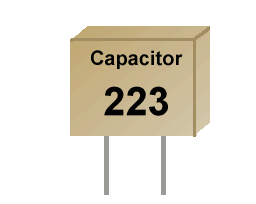| Color | 1st Band | 2nd Band | Multiplier | Tolerance |
|---|---|---|---|---|
| Black | 0 | 0 | 1 Ohm | - |
| Brown | 1 | 1 | 10 Ohm | - |
| Red | 2 | 2 | 0.1 KOhm | - |
| Orange | 3 | 3 | 1 KOhm | - |
| Yellow | 4 | 4 | 10 KOhm | - |
| Green | 5 | 5 | 100 KOhm | - |
| Blue | 6 | 6 | 1 MOhm | - |
| Purple | 7 | 7 | - | - |
| Grey | 8 | 8 | - | - |
| White | 9 | 9 | - | - |
| Gold | - | - | 0.1 Ohm | +/-5% |
| Silver | - | - | - | +/-10% |

| 10, 12, 15, 18, 22, 27, 33, 39, 47, 56, 68, 82 |
| 10, 11, 12, 13, 15, 16, 18, 20, 22, 24, 27, 30, 33, 36, 39, 43, 47, 51, 56, 62, 68, 75, 82, 91 |
| 100, 102, 105, 107, 110, 113, 115, 118, 121, 124, 127, 130, 133, 137, 140, 143, 147, 150, 154, 158, 162, 165, 169, 174, 178, 182, 187, 191, 196, 200, 205, 210, 215, 221, 226, 232, 237, 243, 249, 255, 261, 267, 274, 280, 287, 294, 301, 309, 316, 324, 332, 340, 348, 357, 365, 374, 383, 392, 402, 412, 422, 432, 442, 453, 464, 475, 487, 499, 511, 523, 536, 549, 562, 576, 590, 604, 619, 634, 649, 665, 681, 698, 715, 732, 750, 768, 787, 806, 825, 845, 866, 887, 909, 931, 953, 976 |
| Value = digit1 digit2 * 10^ digit3 pF Common digit3 multipliers: 5 = 0.1 μF = 100 nF 4 = 10 nF 3 = 1 nF 2 = 0.1 nF 1 = 10 pF |
Example values:
475= 4.7μF 474= 0.47μF = 470 nF 473= 0.047μF = 47 nF 472= 4.7 nF = 4700pF 471= 0.47 nF = 470pF 470= 0.047 nF = 47pF |
